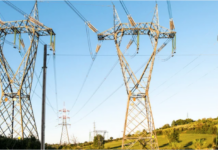The State Bank of Pakistan’s Monetary Policy Committee (MPC) decided to maintain the policy rate at 22% in a meeting held on Monday, which was in line with market expectations.
In an analysts’ briefing following the MPC meeting, SBP Governor Jameel Ahmad said the committee was of the view the current stance was “aggressive and tight” and should continue.
The central bank last hiked the policy rate by 100 basis points (bps) to 22% in an emergency meeting in June ahead of an agreement with the International Monetary Fund (IMF). Since then, it has maintained the rate in meetings held on July 31, September 14, and October 30.
Commenting on the latest announcement, independent economic analyst AAH Soomro said it was largely as per expectations. While some wanted a rate cut, “short term stability cannot be risked at the expense of short lived growth,” he added.
Soomro said there was a much higher chance the MPC would slash the rate at its next meeting on December 12 as the second half of fiscal year 2024 “will see significant improvement in inflation outlook, successful IMF review and full impact of gas price hike”.
“The forward guidance shows the worst is behind and good times are ahead,” the analyst added.
Inflation to decline
Following the IMF agreement, the Fund asked the SBP to maintain an appropriately tight monetary policy that counters inflation. While inflation clocked in at 31.44% in September, the SBP’s Monetary Policy Statement said it was expected to decline in October and then maintain a downward trajectory, especially in the second half of the fiscal year. It cited downward adjustments in fuel prices, easing prices of some major food commodities, and a favourable base effect for this projection.
It acknowledged that the recent volatility in global oil prices as well as an increase in domestic gas tariffs could pose inflationary risks, but added, however, that they would be offset by targeted fiscal consolidation in fiscal year 2024’s first quarter; improvement in market availability of key commodities; and the alignment of interbank and open market exchange rates.
The SBP’s stance regarding inflation is in line with analyst expectations. In a report released earlier this month, Topline Securities said inflation was expected to decrease because of an average decline of 11% in domestic fuel prices, stable international oil prices and the rupee’s strengthening against the dollar by 8.49% since September 5.
Both Arif Habib Limited and Topline Securities expect average annual inflation in fiscal year 2024 to remain between 23-24%, compared to 29.2% in fiscal year 2023.
But all these figures are related to headline inflation. Another measure of the effect on prices is core inflation, which removes volatile factors such as food and energy prices, when measuring inflation. And Pakistan’s core inflation has remained around 21% in the last four months. Is this figure going to remain elevated?
Addressing this concern in the statement, the Monetary Policy Committee stated: “The fiscal policy is also contributing to the overall stabilisation measures, which, coupled with better availability of food commodities, is likely to supplement the central bank’s efforts to bring down inflation.”
Responding to a question in the analysts’ briefing regarding the impact of the global situation — the violence in the Gaza strip, and volatility in oil prices — the SBP governor said the committee was “very closely” monitoring international commodity prices.
“We see a number of positive things happening on the basis of which we expect the second half of fiscal year 2024 to be much better. The current stance is appropriate for [combatting] inflation and [encouraging] economic development,” he asserted.
Positive real interest rate
“We have taken into account all relevant factors and developments on the external, monetary and fiscal sides. Based on that, two points we have consistently maintained are 1- The monetary policy stance will continue to be aggressive and tight considering the agreement we reached with the IMF, and 2- The rate will be positive on a forward-looking basis,” Ahmad said.
In simple words, the SBP expects the future inflation rate to be below the 22% interest rate it has decided to maintain. What exactly does this mean? Let’s say the interest rate offered by a bank on your deposited savings is 20%. If you kept Rs 1 lakh in that account, at the end of the year, you would have Rs 1.2 lakh. However, the annual inflation that year was 21%. This means that while the amount of money in your account increased, in real terms, you could buy less with that money because the cost would be Rs 1.21 lakh. This means the real interest rate was negative. If the real interest rate was positive — let’s say 23% — then you would have had Rs 1.23 lakh at the end of the year.
Positive real interest rates encourage people to save and keep their money in banks as it protects them from inflation. So, raising the benchmark interest rate to a point where the real interest rate is positive means less money is going towards purchases, which decreases demand — one of the primary tools a central bank uses to curb inflation.
The Monetary Policy Statement also contained a caveat: its outlook is based on continued fiscal consolidation and timely realisation of planned external inflows. During the briefing, SBP Governor Ahmad said the country was expected to secure the release of the second tranche, amounting to $710 million, of the $3 billion Standby Agreement with the IMF, and would also receive funding from other multilaterals.
Strengthening economy
According to the Monetary Policy Statement, “recent data on economic activity reinforces the MPC’s earlier expectation of moderate growth for this year.” This data included a considerable increase in production of Kharif crops, moderate recovery in other key activity indicators like cement, petroleum and auto sales, and a gradual improvement in the large-scale manufacturing output in the first two months of the current fiscal year.
Separately, there was a “substantial improvement” in the current account deficit in the first quarter of fiscal year 2024, while both exports and workers’ remittances improved in September over the preceding two months, the MPS noted.
Besides this, the rupee strengthened due to administrative actions by the authorities and the government, as well as the structural reforms introduced by the SBP for exchange companies, which improved sentiments and liquidity in the foreign exchange market. This led to increased inflows in the interbank market and stabilisation in the SBP’s foreign exchange reserves which stand at $7.49 billion as of October 20.
The SBP governor said the reserves would be shored up to $10 billion by June 2024, and the current account deficit was expected to be kept under $5 billion.
Responding to a question regarding a decline in currency in circulation, Domestic Market & Monetary Management Department Director Amin Lodhi attributed it to three reasons: unwinding of seasonal effects such as Haj, increase in deposits due to high interest rates, and declining economic uncertainty.

























22%, where are we heading!!!